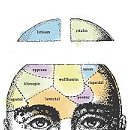From Science: “In 2016, when the U.S. Congress unleashed a flood of new funding for Alzheimer’s disease research, the National Institute on Aging (NIA) tapped veteran brain researcher Eliezer Masliah as a key leader for the effort. He took the helm at the agency’s Division of Neuroscience, whose budget—$2.6 billion in the last fiscal year—dwarfs the rest of NIA combined.
As a leading federal ambassador to the research community and a chief adviser to NIA Director Richard Hodes, Masliah would gain tremendous influence over the study and treatment of neurological conditions in the United States and beyond. He saw the appointment as his career capstone. Masliah told the online discussion site Alzforum that ‘the golden era of Alzheimer’s research’ was coming and he was eager to help NIA direct its bounty. ‘I am fully committed to this effort. It is a historical moment.’
Masliah appeared an ideal selection. The physician and neuropathologist conducted research at the University of California San Diego (UCSD) for decades, and his drive, curiosity, and productivity propelled him into the top ranks of scholars on Alzheimer’s and Parkinson’s disease. His roughly 800 research papers, many on how those conditions damage synapses, the junctions between neurons, have made him one of the most cited scientists in his field. His work on topics including alpha-synuclein—a protein linked to both diseases—continues to influence basic and clinical science.
But over the past 2 years questions have arisen about some of Masliah’s research. A Science investigation has now found that scores of his lab studies at UCSD and NIA are riddled with apparently falsified Western blots—images used to show the presence of proteins—and micrographs of brain tissue. Numerous images seem to have been inappropriately reused within and across papers, sometimes published years apart in different journals, describing divergent experimental conditions.
After Science brought initial concerns about Masliah’s work to their attention, a neuroscientist and forensic analysts specializing in scientific work who had previously worked with Science produced a 300-page dossier revealing a steady stream of suspect images between 1997 and 2023 in 132 of his published research papers. (Science did not pay them for their work.) ‘In our opinion, this pattern of anomalous data raises a credible concern for research misconduct and calls into question a remarkably large body of scientific work,’ they concluded.”

***
Back to Around the Web











